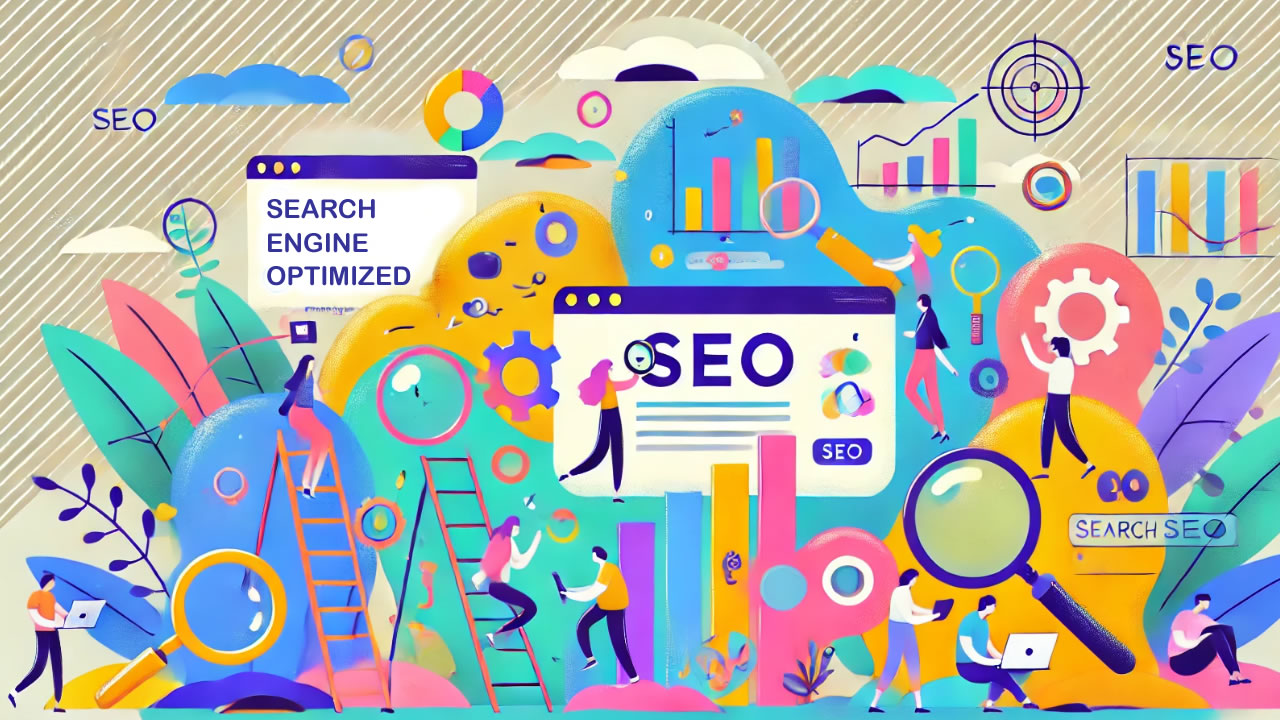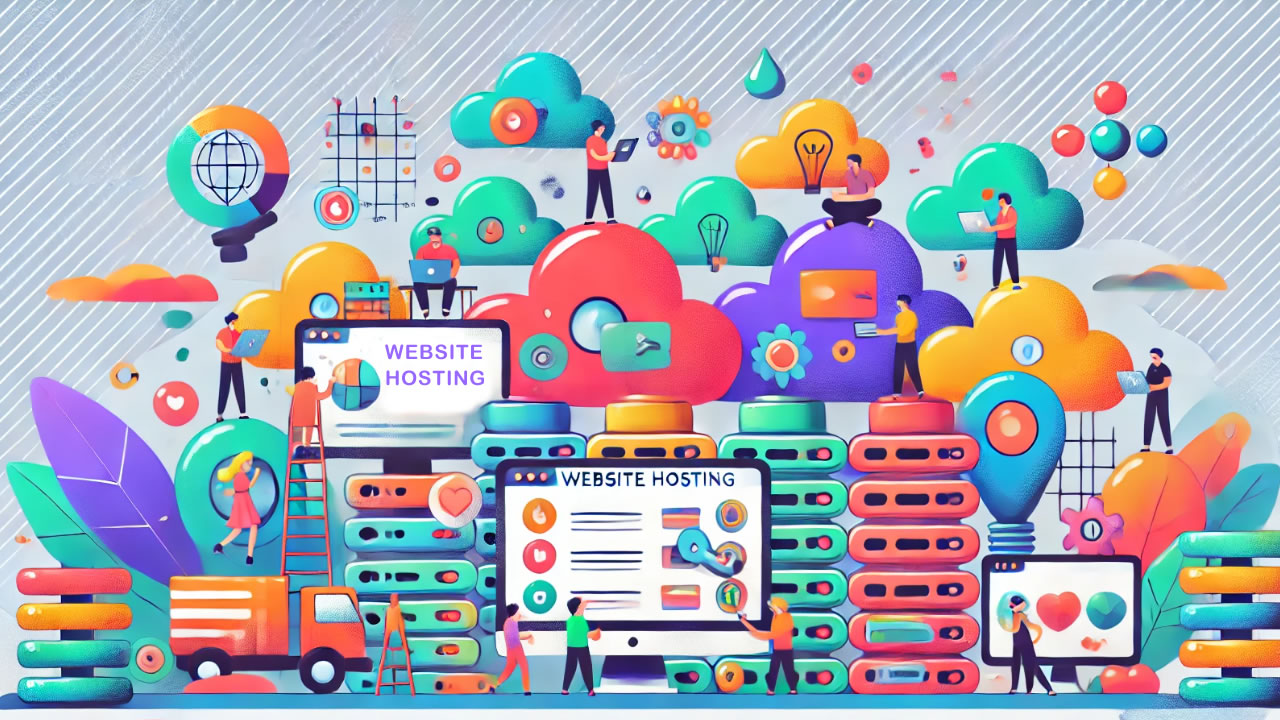Did you know that your website’s speed plays a crucial role in determining the success of your online presence? Page speed not only affects user experience but also directly impacts your website’s search engine optimization (SEO) performance. In fact, Google has made it clear that page speed is a key ranking factor for both desktop and mobile searches. A slow website can hurt your rankings, lead to higher bounce rates, and ultimately cost your business valuable customers.
In this blog post, we’ll explore the importance of website page speed for SEO and how a faster website can benefit your business. We’ll discuss how slow page load times can negatively affect your appearance in search results and explain the key metrics you need to measure your website’s performance. Finally, we’ll share some actionable tips on how you can work with us to speed up your website, improve your web server performance, and enhance your overall business website experience.
How Website Page Speed Impacts SEO
Page speed refers to how quickly a webpage loads its content, including text, images, videos, and other elements. Search engines like Google prioritize fast websites because they provide a better user experience. But page speed doesn’t just affect user satisfaction—it plays a critical role in how your website ranks in search engine results.

Google’s Page Speed as a Ranking Factor
Since 2010, Google has considered page speed as a ranking factor in desktop searches, and in 2018, they extended this to mobile searches with their “Speed Update”. This update emphasized that slower websites, particularly on mobile devices, would see negative impacts on their rankings. Given that more than 60% of searches come from mobile devices, it’s crucial for websites to load quickly on all platforms.
User Experience and Bounce Rates
A slow website can lead to higher bounce rates, meaning users leave your site before engaging with your content. According to research, 53% of mobile users will abandon a website if it takes longer than 3 seconds to load. When users bounce back to search results without interacting with your site, search engines interpret this as a sign that your content isn’t valuable or relevant, which can lower your ranking.
In contrast, a fast website keeps users engaged, leading to longer session durations and more interactions, which are positive signals for search engines.
Core Web Vitals
In May 2021, Google introduced Core Web Vitals as part of its Page Experience Update. These metrics directly assess how users perceive the performance of a webpage and play a significant role in determining search rankings. The three key metrics of Core Web Vitals are:
- Largest Contentful Paint (LCP): Measures how long it takes for the main content of a webpage to load. To provide a good user experience, LCP should occur within 2.5 seconds.
- First Input Delay (FID): Measures the time it takes for a webpage to become interactive. A good FID score is less than 100 milliseconds.
- Cumulative Layout Shift (CLS): Assesses the visual stability of the page by measuring how much elements on the page move around while loading. A CLS score of less than 0.1 is ideal.
If your website scores poorly on these Core Web Vitals, your SEO performance could suffer, as Google now uses these metrics to evaluate user experience.
Mobile-First Indexing
Google has moved to mobile-first indexing, meaning that the mobile version of your site is prioritized when determining your rankings. This shift makes mobile page speed even more critical for SEO. Slow mobile page load times can result in a lower mobile ranking, which may significantly reduce your website’s visibility in search results.
Crawling and Indexing Efficiency
Search engines use web crawlers to index content, and slower websites can hinder this process. If your site takes too long to load, search engine crawlers may not be able to crawl and index all of your pages efficiently. This can lead to fewer pages being indexed, which limits the content that search engines can display in search results. By improving your page speed, you allow crawlers to access your content more easily, improving your overall SEO performance.
Benefits of a Fast Website for Your Business
A faster website not only helps with SEO, but it also delivers a range of business benefits that can drive traffic, conversions, and customer satisfaction.
Better User Experience and Higher Engagement
A fast-loading website creates a seamless and enjoyable experience for visitors, leading to higher engagement rates. Users are more likely to explore multiple pages, spend more time on your site, and interact with your content when everything loads quickly. This increased engagement can lead to higher conversion rates and improved customer satisfaction.
Lower Bounce Rates
Bounce rates are a key metric that measure how quickly visitors leave your site after landing on a page. If your website loads slowly, visitors are more likely to abandon it and seek out faster alternatives. By speeding up your site, you reduce bounce rates and increase the likelihood of converting visitors into customers.
Higher Conversion Rates
Page speed has a direct impact on conversion rates. Research by Google shows that a 1-second delay in page load time can reduce conversions by up to 20%. Whether you’re an e-commerce business, a service provider, or a content creator, a fast website ensures that potential customers can quickly find what they’re looking for and take action—whether it’s making a purchase, filling out a contact form, or signing up for a newsletter.
Improved Customer Trust and Brand Perception
A slow website can give users the impression that your business is unprofessional or unreliable. On the other hand, a fast website conveys efficiency and trustworthiness. When users experience smooth navigation and quick load times, they are more likely to view your business as credible and return for future interactions.
Increased Ad Revenue for Content Sites
If your business relies on ad revenue, a fast website can help increase the visibility of ads and, in turn, boost your ad income. Slow-loading pages often prevent ads from displaying properly, reducing the chances that users will see and interact with them. A faster site ensures that ads load in time for users to engage with them, leading to higher click-through rates and ad revenue.
Enhanced Mobile Performance
As mobile traffic continues to grow, optimizing your site’s speed for mobile users is more important than ever. Fast-loading websites deliver a better mobile experience, which is essential in attracting and retaining mobile users. In fact, mobile-first design and page speed optimization are key elements in staying competitive in the mobile-dominated landscape.

Key Metrics to Measure Your Website’s Page Speed
To optimize your website’s speed and performance, it’s important to understand the key metrics that affect page load times. These metrics give you a clear picture of how well your site performs and what areas need improvement.
Largest Contentful Paint (LCP)
As mentioned earlier, LCP measures how long it takes for the largest piece of content (such as images or blocks of text) to load. This metric focuses on user experience, as it shows how long visitors have to wait before they can see the main content of your page. An ideal LCP score is under 2.5 seconds.
First Input Delay (FID)
FID measures how long it takes for your website to respond to a user’s first interaction, such as clicking a button or link. A fast FID score of less than 100 milliseconds ensures that users can engage with your site quickly without delays.
Cumulative Layout Shift (CLS)
CLS assesses the visual stability of a webpage. It measures how often elements shift on the page while it’s loading. For example, if users are about to click a button, but it moves unexpectedly as images load, that would lead to a poor CLS score. To provide a stable user experience, aim for a CLS score of less than 0.1.
Time to First Byte (TTFB)
TTFB measures the time it takes for a browser to receive the first byte of information from your web server. A lower TTFB means faster server response times, which can significantly reduce overall page load times. Ideally, TTFB should be under 200 milliseconds.
Total Blocking Time (TBT)
TBT measures how long your page is blocked from responding to user input while it’s loading. Minimizing TBT helps improve your site’s interactivity and overall user experience.
Speed Index
The Speed Index measures how quickly the contents of a webpage are visually displayed. The lower the Speed Index, the faster your content is rendered for users. A good Speed Index score is typically under 4 seconds.
Fully Loaded Time
The fully loaded time refers to the total time it takes for all elements on a webpage to fully load. This includes images, scripts, videos, and any other content. Ideally, the fully loaded time should be under 3 seconds for a smooth user experience.
How to Improve Your Website’s Page Speed
Now that you understand how critical page speed is to SEO and business success, let’s look at how you can improve your website’s performance. Here are some technical strategies to enhance your website’s speed:
Optimize Images
Large, unoptimized images are one of the most common reasons for slow page load times. Compress and resize images to reduce their file size without sacrificing quality. Using WebP format or lazy loading techniques can also help improve load times by only loading images as they become visible on the page.
Minimize HTTP Requests
Each element on a webpage (such as images, stylesheets, and scripts) generates an HTTP request. The more requests, the slower your page will load. Reducing the number of elements on a page or combining CSS and JavaScript files can help minimize HTTP requests.
Leverage Browser Caching
Browser caching allows previously visited websites to store files in a user’s browser. This means that when the user returns to the site, the browser doesn’t have to reload all the elements from scratch, leading to faster load times.
Use a Content Delivery Network (CDN)
A Content Delivery Network (CDN) is a network of servers distributed across various geographic locations. When a user visits your website, the CDN delivers content from the server closest to them, reducing the time it takes for data to travel and improving load speeds.
Minify CSS, JavaScript, and HTML
Minification refers to removing unnecessary characters, spaces, and comments from your CSS, JavaScript, and HTML files to reduce file size. This makes it easier and faster for browsers to process and load these files.
Reduce Server Response Time
The speed of your web server can have a significant impact on your overall page load time. Consider upgrading to a faster server, using a dedicated server, or employing server-side caching techniques to reduce the time it takes for your server to respond to requests.
Use Lazy Loading for Non-Critical Elements
Lazy loading delays the loading of non-essential elements (such as images, videos, or ads) until they’re needed. This ensures that the most important content on your page loads quickly, enhancing the user experience.
How To Improve Your Website’s Speed and Performance
A fast-loading website is no longer a luxury—it’s a necessity. Whether you’re aiming to improve your SEO, reduce bounce rates, increase conversions, or enhance user satisfaction, improving your page speed is one of the most effective ways to achieve these goals.
At NeoChromatic, we specialize in helping businesses in Nashville and beyond optimize their websites for speed and performance. We can assess your current website’s performance, identify areas for improvement, and implement advanced strategies to speed up your website. From optimizing your images to improving your server response times, we’ll work with you to ensure your website is fast, efficient, and ready to outperform your competition.
Ready to boost your website’s performance? Contact us today to get started and transform your business with a faster, more effective website!
If you would like to read more about the history of factors that influence search position, check out How We Got Here: The History of Search Engine Optimization
Let Us Speed Up Your Website Today
Schedule A CallRead more about SEO

How DIY Website Builders Create SEO Problems for Businesses

How We Got Here: The History of Search Engine Optimization
